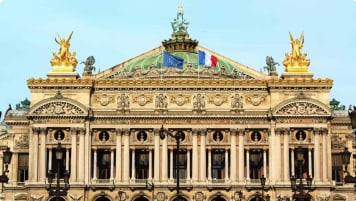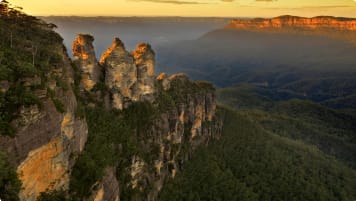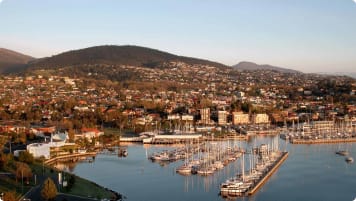Italian Renaissance | Summer School course
This Summer school course looks at the influence and contribution five key families in shaping today's Italy. In the 15th and 16th centuries the principalities that became Italy were alive with new ideas. The boundaries of art, architecture, music, science, politics, religion and literature were pushed. It was also riven by bitter rivalry and even open warfare between the numerous independent city states.
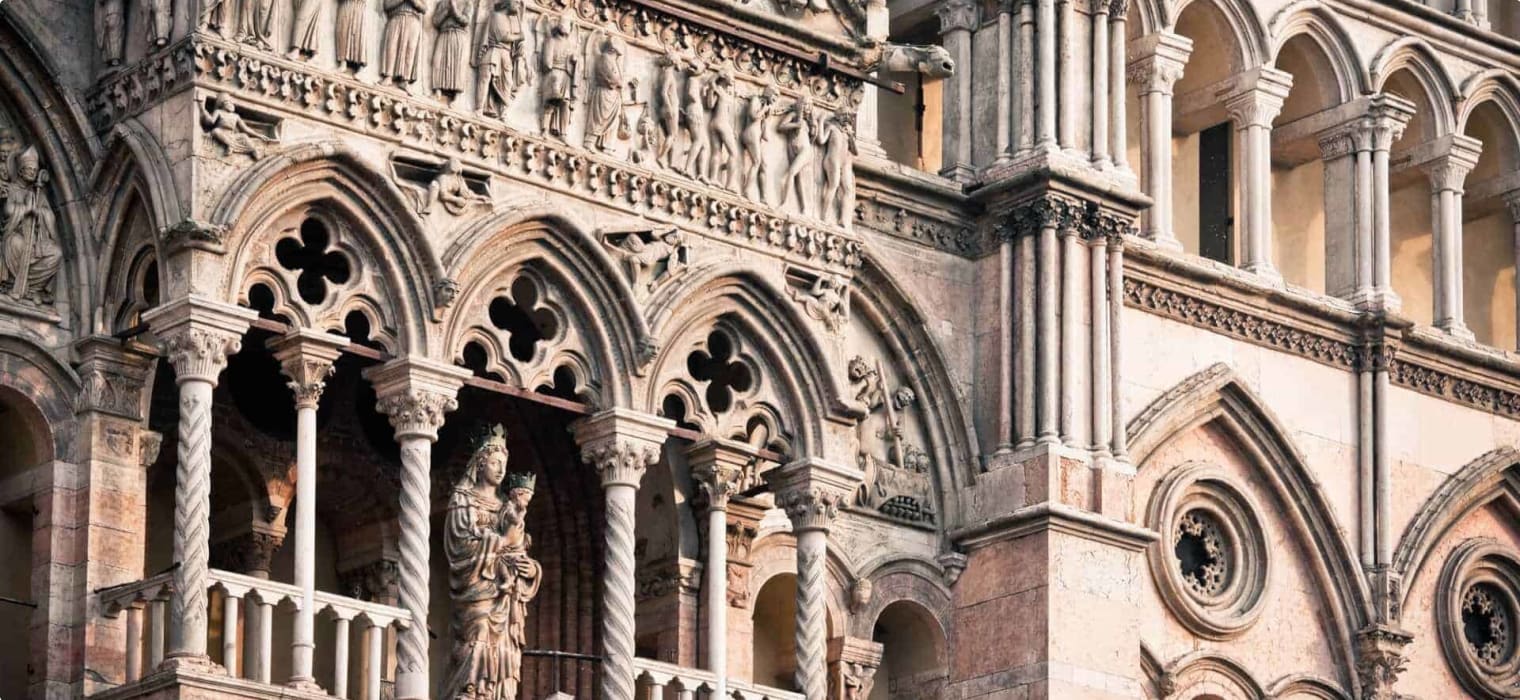
Highlights
- 1. Discuss the impact these families had on each other and the church.
- 2. Discover the role of finance and labour in their quests to dominate each other
- 3. Learn about how success was achieved.
- 4. Consider the role of "The Prince" in each renaissance court.
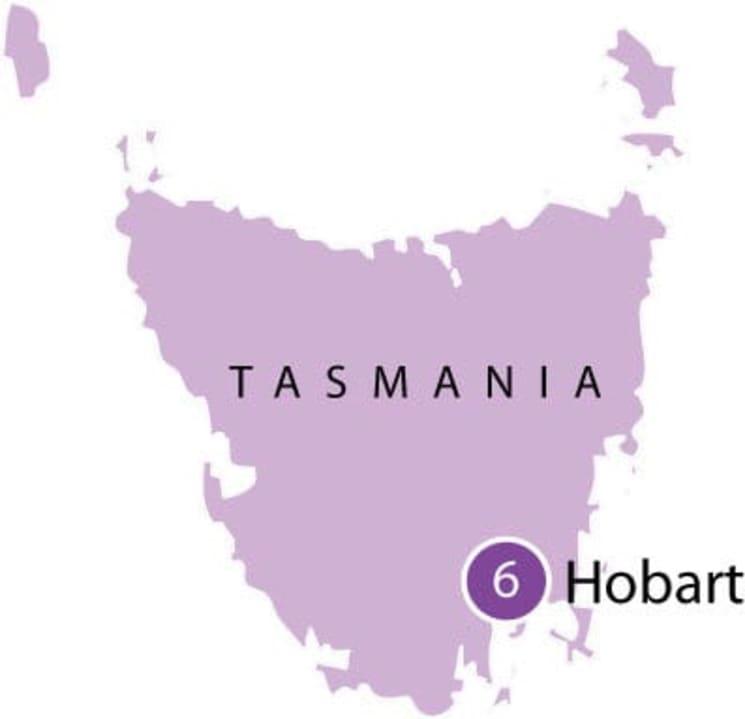
Italian Renaissance summer school course
This Italian Renaissance Summer school course looks at the influence and contribution five key families in shaping today's Italy.
In the 15th and 16th centuries the principalities that became Italy were alive with new ideas. The boundaries of art, architecture, music, science, politics, religion and literature were pushed. It was also driven by bitter rivalry and even open warfare between the numerous independent city states. Out of this chaos and upheaval emerged a number of significant families who drove the development in their individual cities. In a number of cases their quarrels also led to the destruction of much of what they had achieved. This tour concentrates on five important Italian renaissance families and the cities they helped to build.
- The Medici of Florence
- The patriarch of Urbino
- The Este of Ferrara
- The Gonzago of Mantua
- The Sforza of Milan
They intermarried, occasionally they were allies against the Pope, the king of Naples, the king of France and other states. Sometimes they fought pitched battles against each other. But all five left an amazing legacy of buildings and art works.
In this Italian renaissance small group course we take the time to explore these five independent cities. We learn about the families who drove the development of each city. You learn and gain an appreciation of Renaissance Italy. We will discuss each day the influence of each family particularly on the palaces, churches, civic buildings built. We also look at the contribution made to the art world. Of course we also consider the role of the church.
Who were the Families?
Who were the these five families. How did these monumental changes in each principality come to be? How was the wealth created and the impact of these families on society.
In the Classroom
We will read some of the contemporary accounts from both sides and probe the lives of some of the famous figures of each family. This class will endeavour to consider and discuss the role these rennaissance cities and these families have played and their contribution to modern Italy.
Summer School classes for mature and senior travellers
Odyssey offers a collection of week-long learning programs offered each January in Hobart, Tasmania. Courses are refreshed for each year’s programs. Classes are limited to 15 people.
Over the last twenty-five years, Odyssey’s small group Summer School Program has given countless travellers an unforgettable educational and travel experience. Each summer, we prepare and offer fun and challenging special interest courses and programs designed to give travellers the options and opportunity to learn about history, religion, Australian culture, and the arts, among many other topics. These courses are designed in such a way that enthusiasts can deepen their knowledge of a particular topic or be initiated into new understandings on a subject.
These programs offered are tailor-made for mature-aged and senior travellers who are eager to explore in-depth a particular topic. Summer school learning programs for mature and senior travellers who are and remain curious about the world. Read more about our philosophy of the Odyssey Summer Schools.
Gallery
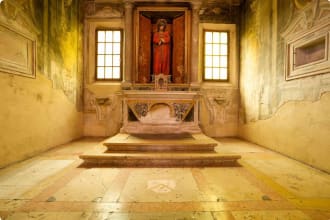
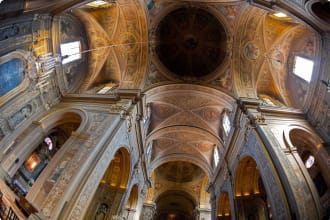
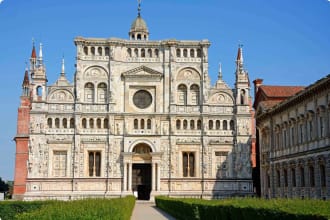

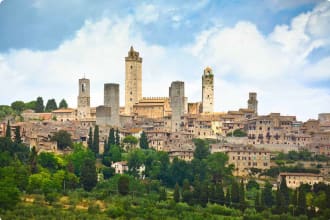
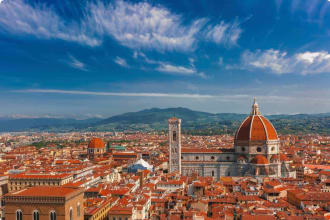
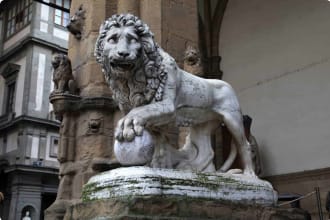
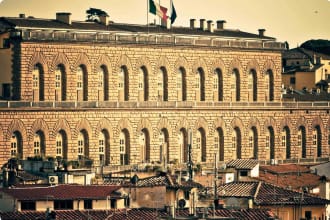
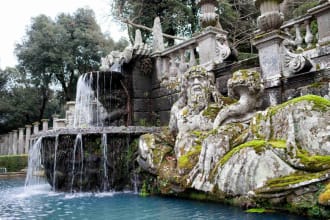
Itinerary
Day 1: Hobart
Accommodation: Mövenpick Hotel Hobart or similar
The Summer school program begins with a welcome reception and dinner.
Day 2: Hobart
Accommodation: Mövenpick Hotel Hobart or similar
Today we begin with a number of questions essential to a study of the period. We start with a look at just what is meant by the Renaissance. We also take a look at the composition of “Italy” and its city states during the Renaissance period. Why did this fragmented Italy actually add to the development of art and learning? What was the role of the condottieri in Italy at the time? What was the role of the popes?
From there we move on to the city of Florence and the Medici family, including their triumphs and tribulations.
Day 3: Hobart
Accommodation: Mövenpick Hotel Hobart or similar
Today the course leader (TBC) takes the group for a look at particularly at Renaissance art and Literature.
Day 4: Hobart
Accommodation: Mövenpick Hotel Hobart or similar
This morning, we return to Florence and explore what happened when the Medici were out of town. What part was played by the very religious Savonarola? And how did Machiavelli come to be such an important figure in Florentine political life?
In the afternoon, we take a look at the city of Urbino and its ruler, Federico Montefeltro. Urbino is off the usual tourist route (unfortunately it doesn’t even have a railway station) but is well worth a look. During the rule of the Montefeltro family the city became one of the most beautiful in all of the peninsula. It was the birthplace of Raphael and is now a UNESCO world heritage city
Day 5: Hobart
Accommodation: Mövenpick Hotel Hobart or similar
Today we’ll look at two cities, Ferrara and Mantua. Ferrara was the home of the d’Este family and they have left an indelible mark on the city. They led tumultuous lives but left behind a great legacy in art, architecture and music. This is where Lucrecia Borgias ended up as the highly respected wife of the duke and mother of his many children.
In the afternoon we’ll move on to Mantua, home of the Gonzago family. We’ll look particularly at the work of the court artist Mantegna and at the role played by Countess Beatrice d’Este.
Day 6: Hobart
Accommodation: Mövenpick Hotel Hobart or similar
This morning we look at Milan during the reign of the Sforza family. Leonardo da Vinci worked here for almost 20 years during the rule of Ludovico Sforza and it was here that he painted “The Last Supper”.
In the afternoon, time permitting, we look at a number of other aspects of Renaissance life including food and feasting and the Renaissance garden.
In the evening we conclude our course with a farewell dinner at the Customs House Hotel Restaurant, starting at 6:30pm.
Day 7: Hobart
The tour will end after breakfast.
Includes / Excludes
What’s included in our Tour
- 6 nights in full en suite accommodation
- 6 breakfasts and 2 dinners.
- Lectures and handouts as indicated.
- Services of a study leader and lecturers.
- Complimentary wifi.
What’s not included in our Tour
- Comprehensive travel insurance.
- Costs of a personal nature.
Participants must be able to carry their own luggage, climb and descend stairs, moderate walking on uneven surfaces between 3 - 5 kilometers per day. Suitable for most fitness levels
Book now
Make it a private tour
Easing your journey
Crossing international borders with restrictions
The list of requirements to travel internationally has changed and will continue to change for several years. Odyssey is here to assist you in managing your way through these requirements:
For more information see our Crossing international borders with restrictions page.
Book With Confidence
If less than 30 days before your tour starts you are unable to travel as a result of Government travel restrictions, Odyssey Traveller will assist you with a date change, provide you with a credit or process a refund for your booking less any non-recoverable costs.
See Terms and conditions for details.
Peace of Mind Travel
The safety of our travellers, tour leader, local guide and support staff has always been our top priority and with the new guidelines for public health and safety for keeping safe for destinations around the world, we’ve developed our plan to give you peace of mind when travelling with us.
See Peace of Mind Travel for details.
Reviews
It was a first-rate program and fully met expectations
Participant 2018
Mal Bock was an Excellent Program leader & made it a very Pleasurable Experience. I would certainly like to attend further things led by her.
Participant 2018
Mal's knowledge of her subject was outstanding and notes a great help.
Participant 2018
Very knowledgeable with a good sense of humour. Well prepared.
Participant 2018
Great course. Left me wanting to explore more. Plenty of variety in presentation methods. Continually engaging.
Participant 2018
I had high expectations of all aspects of the school and they were met.
Participant 2018
Reading List Download PDF
Art of the Italian Renaissance Courts
Alison Cole
This fascinating study of Renaissance courtly art and culture in fifteenth and early sixteenth-century Italy encompasses the most recent scholarship on the courts, court art and noble values. Alison Cole not only considers the role of artists, but explores the distinctive uses to which art was put at the courts, from the smaller duchies and princely courts of Ferrara, Mantua and Urbino to the larger courts of Naples and Milan. The social, intellectual and artistic milieu of each court is brought vividly to life, along with the complex personalities of the rulers, their relationships with the civic and ecclesiastical authorities, and the role of court women as patrons of the arts. Drawing on a wide range of contemporary texts and visual material, Cole paints a rich picture of the these extraordinary courts in the moment of their greatest brilliance.
A Short History of the Italian Renaissance
Virginia Cox
The extraordinary creative energy of Renaissance Italy lies at the root of modern Western culture. In her elegant new introduction, Virginia Cox offers a fresh vision of this iconic moment in European cultural history, when - between the fourteenth and sixteenth centuries - Italy led the world in painting, building, science and literature. Her book explores key artistic, literary and intellectual developments, but also histories of food and fashion, map-making, exploration and anatomy. Alongside towering figures such as Leonardo da Vinci, Michelangelo, Raphael, Petrarch, Machiavelli and Isabella d'Este, Cox reveals a cast of lesser-known protagonists including printers, travel writers, actresses, courtesans, explorers, inventors and even celebrity chefs. At the same time, Italy's rich regional diversity is emphasised; in addition to the great artistic capitals of Florence, Rome and Venice, smaller but cutting-edge centres such as Ferrara, Mantua, Bologna, Urbino and Siena are given their due. As the author demonstrates, women played a far more prominent role in this exhilarating resurgence than was recognized until very recently - both as patrons of art and literature and as creative artists themselves. 'Renaissance woman', she boldly argues, is as important a legacy as 'Renaissance man'.
The Cardinal’s Hat
Professor Mary Hollingsworth
Working with Ippolito's letters and ledgers, recently uncovered in an archive in Modena, Italy, Mary Hollingsworth has pieced together a fascinating and undeniably titillating tale of this Renaissance cardinal and his road to power and wealth in sixteenth century Europe. The ledgers document every aspect of Ippolito's comings and goings, and he comes to life out of the minutiae, as do the lives of his staff.
The Ugly Renaissance
Alexander Lee
Featuring the beauties of Michelangelo and Leonardo da Vinci, combined with the dark and hidden side of the Renaissance, by an acclaimed historian and expert in the period. Renowned as an age of artistic rebirth, the Renaissance is cloaked with an aura of beauty and brilliance. But behind the Mona Lisa's smile lurked a seamy, vicious world of power politics, perversity and corruption that has more in common with the present day than anyone dares to admit. Enter a world of corrupt bankers, greedy politicians, sex-crazed priests, rampant disease, and lives of extravagance and excess. Enter the world of the ugly Renaissance. Uncovering the hidden realities beneath the surface of the period's best-known artworks, historian Alexander Lee takes the reader on a breathtaking and unexpected journey through the Italian past and shows that, far from being the product of high-minded ideals, the sublime monuments of the Renaissance were created by flawed and tormented artists who lived in an ever-expanding world of bigotry and hatred. The only question is: will you ever see the Renaissance in quite the same way again?
The Tigress of Forli
Elizabeth Lev
A strategist to match Machiavelli; a warrior who stood toe to toe with the Borgias; a wife whose three marriages would end in bloodshed and heartbreak; and a mother determined to maintain her family s honor, Caterina Riario Sforza de Medici was a true Renaissance celebrity, beloved and vilified in equal measure. In this dazzling biography, Elizabeth Lev illuminates her extraordinary life and accomplishments. Raised in the court of Milan and wed at age ten to the pope s corrupt nephew, Caterina was ensnared in Italy s political intrigues early in life. After turbulent years in Rome s papal court, she moved to the Romagnol province of Forli. Following her husband s assassination, she ruled Italy s crossroads with iron will, martial strength, political savvy, and an icon s fashion sense. In finally losing her lands to the Borgia family, she put up a resistance that inspired all of Europe and set the stage for her progeny including Cosimo de Medici to follow her example to greatness.
Power and Imagination: City-States in Renaissance Italy
Lauro Martines
This work contends that the Italian Renaissance ought to be considered in two stages: one, the eleventh century to 1300 when the urban political groundwork is laid; and two, 1300 to 1600 when the resulting cultural explosion occurs.
The Pope's Daughter
Caroline P. Murphy
The untold story of how Felice della Rovere, the illegitimate daughter of Pope Julius II, became the most powerful woman in Rome. Caroline P. Murphy evokes not only the great turbulence and creativity of Renaissance Italy, but also Felice's daily life, from dealing with squabbles among servants to her advice on the best way to bribe a Pope.
The Medici : Godfathers of the Renaissance
Paul Strathern
A dazzling history of the modest family which rose to become one of the most powerful in Europe, The Medici is a remarkably modern story of power, money and ambition. Against the background of an age which saw the rebirth of ancient and classical learning Paul Strathern explores the intensely dramatic rise and fall of the Medici family in Florence, as well as the Italian Renaissance which they did so much to sponsor and encourage. Strathern also follows the lives of many of the great Renaissance artists with whom the Medici had dealings, including Leonardo, Michelangelo and Donatello; as well as scientists like Galileo and Pico della Mirandola; and the fortunes of those members of the Medici family who achieved success away from Florence, including the two Medici popes and Catherine de' Medicis, who became Queen of France and played a major role in that country through three turbulent reigns.
Lucrezia Borgia: Life, Love, and Death in Renaissance Italy
Sarah Bradford
The very name Lucrezia Borgia conjures up everything that was sinister and corrupt about the Renaissance—incest, political assassination, papal sexual abuse, poisonous intrigue, unscrupulous power grabs. Yet, as bestselling biographer Sarah Bradford reveals in this breathtaking new portrait, the truth is far more fascinating than the myth. Neither a vicious monster nor a seductive pawn, Lucrezia Borgia was a shrewd, determined woman who used her beauty and intelligence to secure a key role in the political struggles of her day. Drawing from a trove of contemporary documents and fascinating firsthand accounts, Bradford brings to life the art, the pageantry, and the dangerous politics of the Renaissance world Lucrezia Borgia helped to create.
Italian Renaissance | Summer School course

